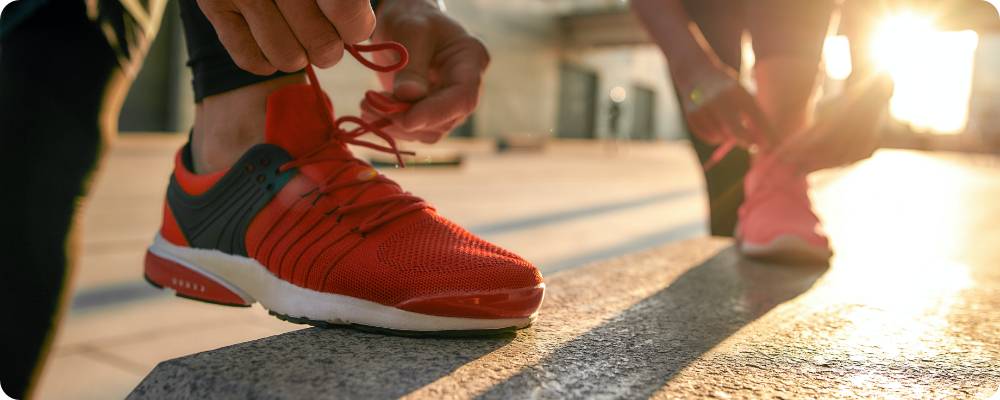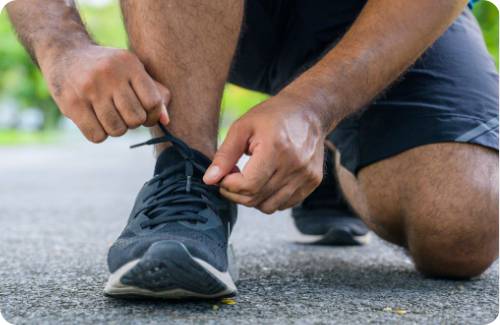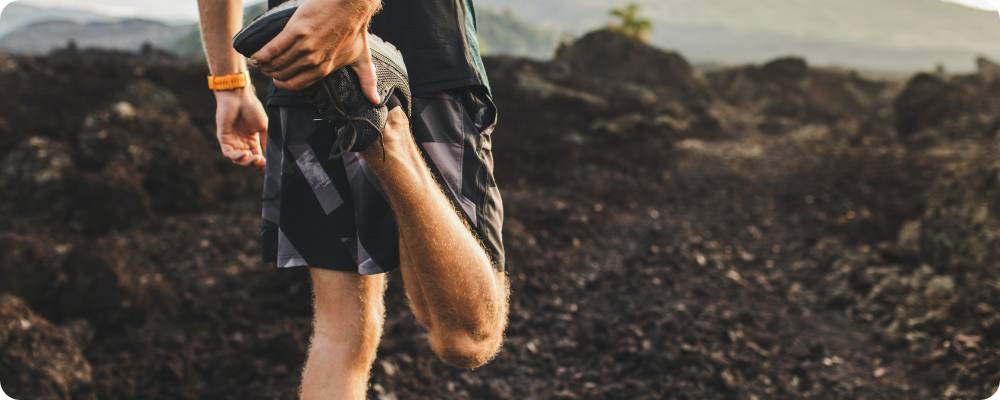How to take care of running shoes?
Receiving a new pair of running shoes is always exciting. Whether as a gift to yourself or a reward, you’ve invested time and money to find a pair that fits your morphology, activity level, and matches your style preferences. Since buying good running shoes can be expensive, proper care is necessary to avoid premature replacement and better for the environment.
Through this article, and with our expert tips, you can maintain your running shoes for as long as possible, keeping them clean and comfortable.
1. Rotate between two pairs of running shoes
Just as you require a break before the next run, your shoes also need rest. Indeed, while you run, you compress the foam and wear down the soles, which needs time to recover after each session. That’s why you might consider having two pairs of shoes. It may appear unnecessary, but it can actually save money in the long term.
2. Clean your shoes by hand
Avoid putting them in the washing machine. Even if it seems super easy, the wash cycle and the drum will harm the fabrics, materials, and the structure of your shoes. High temperatures can cause the soles to separate, reducing the longevity of your shoes. Instead, clean your shoes with a soft brush or damp cloth after every run, especially if you ran in wet or muddy conditions.
3. Dry off your shoes
After your run, ensure to dry your shoes. Even if your shoes seem dry, the sweat from your feet introduces moisture that can lead to bacteria growth, stains on the fabric, and your shoes starting to smell bad. So after each run, remove the insoles (if possible) to dry them separately, and fill your shoes with newspaper or paper towel to absorb moisture, speed up the drying, and preserve the shoes’ shape.
4. Take a look at your laces
It’s really tempting to kick off your shoes after a run, but it could cause them to lose shape. Unlace your shoes manually, and if the laces are dirty, clean them. If you notice any signs of wear while your shoes are in good condition, simply replace your laces.
5. Store your shoes in a dry and well-ventilated area
Always ensure to never leave your shoes outside. Even if it’s obvious under snowy and rainy conditions, you must know that the sun will harm your shoes. Sunlight can speed up drying but at the cost of fading the fabric and weakening the adhesive in your shoes. Additionally, avoid leaving them in your car for long periods due to heat-induced damage
6. Use your shoes exclusively for running
Running shoes are specifically designed for the purpose of running. Wearing them for other activities can speed up the wear and reduce their effectiveness.
Running shoes are categorized into four types: road running, road-to-trail, track & field, and races and competitions.
Similarly, trail running shoes are divided into three categories: light trail, rugged trail, and off-trail. Choose your pair wisely based on the surface you plan to run on.
A specific activity requires a specific type of shoe, especially when it’s about running, trail-running, and hiking designed to optimize your performance and your comfort during these specific activities.
7. Keep an eye on the mileage
Usually, running shoes last for 800 to 1,000 kilometers, while competition shoes tend to only last 300 to 400 kilometers. You might consider using apps to track down your sporting sessions. They often include a feature which allows you to see for how many kilometers you have used your shoes.
8. Know when to say goodbye and move on
Despite your efforts and regardless of how well you maintained your shoes, they’ll reach a point where they’ll no longer offer sufficient protection or foot support. Regularly check your sole to see if there are any trace of wear. After a long time of effective and loyal service, it’s time for them to retire and for you to purchase a new pair that will help you achieve your running objectives.
YOU MIGHT ALSO LIKE...
How to choose a pair of running shoes?
Running is an accessible, economical, and practical sport. You can run whenever and wherever you want: before or after work, during your lunch break, day or night, in the city or in the woods—all you have to do is put on your running shoes, and off you go.
Then there's the all-important question: How do I choose the right pair of shoes to start running?
What are good shoes for heavy runners?
Choosing the right pair of running shoes can improve your performance and reduce the risk of injury. To make your choice, you need to consider various criteria related to your running and personal characteristics.
Heavy runners should pay particular attention to this criterion when choosing their shoes. Indeed, these shoes need to have additional reinforcement and cushioning to minimize the impact on the runner's joints and tendons.
Running should be fun. To keep it that way, we've compiled 6 basic rules that show what's important for feeling good in sports and for optimal recovery/preparation.
To integrate running training into your routine, you should listen to your body, respect it, and start with a rhythm that is tailored to you.





